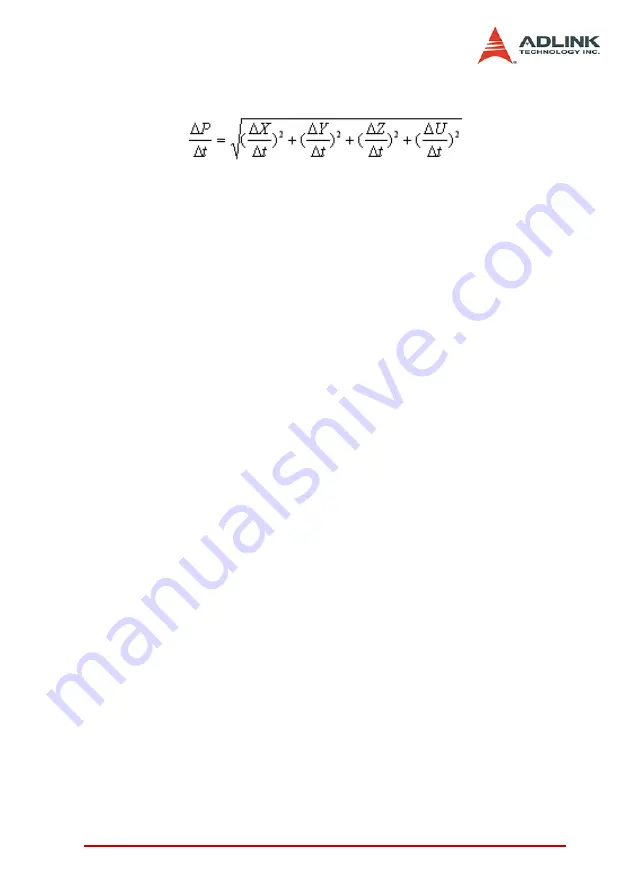
Operation Theory
53
Note
:
1. Each axis runs independently. Thus, a stop function for
each axis must be issued separately.
2. All axes must be of the same card
4.3.6
Circular Interpolation
Any 2 of the 12 axes of SSCNET board can perform circular inter-
polation. As the example below, the circular interpolation means
XY (if axes 0, 1 are selected and assigned to be X, Y respectively)
axes simultaneously start from initial point, (0,0) and stop at end
point,(1800,600). The path between them is an arc, and the Max-
Vel is the tangential speed
For example:
Axis[0] = 0; Axis[1] = 2 ; Dist[0] =
1000 ; Dist [1] = 0
start_arc_tr_move(2, Axis, Dist, -143.1, 10.0,
50.0, 15.0, 0.1, 0.2)
This causes the two axes (axes 0 & 2) to perform
a circular interpolation movement, in which:
Center distance X = 1000 mm
Center distance Y = 0 mm
Moving angle = -143 degree
Start vector speed=10mm/sec
Max. vector speed=50mm/sec
Final vector speed=15mm/sec
Acceleration time = 0.1 sec
Deceleration time = 0.2 sec
Содержание PCI-8366+
Страница 4: ......
Страница 14: ...x List of Figures ...
Страница 17: ...Introduction 3 Figure 1 3 Flowchart for Building an Application ...
Страница 26: ...12 Installation 2 2 PCI 8372 8366 Outline Drawing Figure 2 1 PCI 8372 8366 Mechanical Drawing ...
Страница 31: ...Installation 17 2 Press HPI boot ...
Страница 32: ...18 Installation 3 Press Flash DL button and select a kernel4 hex ...
Страница 34: ...20 Installation Figure 2 3 SSCNET Communication Test Utility ...
Страница 49: ...Signal Connections 35 Figure 3 9 Skin Type ...
Страница 144: ...130 Operation Theory ...
Страница 149: ...Motion Creator 135 Figure 5 6 Software Version Information ...
Страница 158: ...144 Motion Creator Figure 5 10 Tuning Window 5 5 1 Component Description Figure 5 11 Trigger Setting Frame ...
Страница 160: ...146 Motion Creator Figure 5 13 Channel Selection Frame Figure 5 14 Motion Frame ...
















































